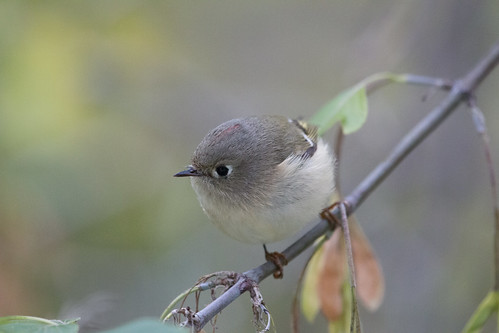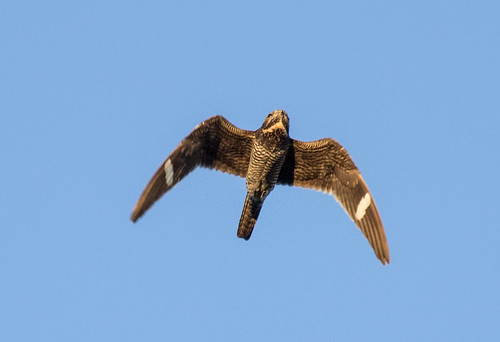
This fall is shaping up to be one of the best I can remember, as far as bird migration through Duluth goes. I’m not surprised—it was a great year for breeding birds, so the raw numbers of birds in our neck of the northern hemisphere are probably as much as we could have hoped for.

We had a decent May, with no horrible deep freezes or heavy snow events to kill migrating warblers. Robins started nesting on the early side. I spent a lot of time in my backyard during the somewhat time-intensive weeks of housebreaking my new puppy Pip, and there were more singing robins in the neighborhood than we’ve had in decades. At times in early morning and evening I could pick out five different males singing simultaneously. Robins re-nest when conditions are good, and the pair that nested nearest my yard in April nested in my yard in June, and nested a third time in my neighbor’s yard—the three in that brood stayed in the nest until their tails were almost entirely grown, fledging on July 31.

Hairy and Downy Woodpeckers both nested in my yard. I had one male Red-bellied Woodpecker visiting my feeders throughout winter and every spring day until May 23; just on Labor Day weekend I heard and got a quick glimpse of a red-belly, and then saw three—at least two were fledglings!

Every single day this June I heard a Ruby-crowned Kinglet singing. He had to be on territory, and to stick with it that long, he had to have attracted a mate. There are some old spruce trees in the alley kitty corner from me. I never did find the nest—it can be way high up, and is deeply nestled into thick branches—but I did finally spot one kinglet carrying food, which is considered confirmation of nesting. No one’s ever reported kinglets nesting in the city before.

Chickadees had a great year, too. Most joyful for me was learning where my chickadee—the one who’d had the deformed beak and is missing all the front toes on one food—was nesting, at my friend Jeanne Tonkin’s house, kitty corner from mine. It was sublimely joyful witnessing that particular bird feeding babies in the little tree cavity on June 10. If I’d known where the nest was while the babies were still tiny, I could have held a dentist’s mirror in and counted them, but now the babies’ eyes were open and they were well feathered—coming too close could have caused them to fledge prematurely.
Chickadees sometimes fledge at as early as 12 days, when their tails are tiny stubs, if something frightens them out of the nest or the parents are struggling to find enough food and one or two babies leap out of the nest to follow the parents out of desperation—then the other chicks must follow or they will likely end up starving, with the more demanding chicks getting all the food.

The very next morning after I first saw the nest, I went back to discover that some of the brood had already fledged. I got to witness the last three leave the nest one by one. They had almost fully grown tails already, which means they’d been in the nest close to the maximum 16 days. The brood’s survival rate is higher the longer they can all stay together developing in the nest. Calculating backward, knowing it must have been 15 or 16 days since they’d hatched, after 12 to 13 days of incubation, and after at least 5 days of egg laying (and quite likely more—I only saw 5 fledglings, but most broods have 6–9 young), I knew that the first egg had been laid, at the very latest, around May 10, and quite likely several days earlier. The fact that the weather was mild enough that early, and we didn’t get any bad snowstorms after that, were critical factors in the survival of this nest. And the early fledging meant that these babies had a whole summer to gain skills before separating from their parents and joining fall flocks.
With such great nesting success this year, it’s small wonder that now we’re seeing so many migrating songbirds. In her long-term study of Song Sparrows, Margaret Morse Nice found that the amount of precipitation each summer is directly related to the number of Song Sparrow young produced, because rainfall is directly related to how many insects are about, and insects are the main food most songbirds feed their young. We’ve had plenty of rain this year, so well spaced that for the first time in decades my yard has a good supply of slugs. Not that I particularly enjoy them, but their success was due to the same factors that kept baby bird numbers high.

I have a regular birdbath in my yard, and in August got one with a tiny recirculating waterfall. Early in the month, I started seeing families of Nashville and Blackburnian warblers coming in to the birdbaths, the recently fledged young still following and occasionally being fed by their parents. Warblers are always on the move by early August, but seeing whole families early in the month was confirmation that they’d had a good year.

So it’s not at all surprising that we’re seeing plenty of flycatchers, vireos, warblers, and tanagers visiting people’s birdbaths and fruit trees now. My friend Tom, who lives in Madison, has a female Ruby-throated Hummingbird whose first nestling just fledged on September 8. This is almost certainly a second or third nest, and it’s late enough that she probably successfully reared at least one brood already. The number of hummingbirds in my own yard has been astonishing right now. They’re doing a little squabbling at the feeders, but most of the action has been up in the trees, where I can watch them zipping about erratically, chasing tiny insects or, I think, sipping tiny droplets of sap oozing from branches. I haven’t seen an adult male since August 30, but there are so many young birds and adult females that I feel pretty confident that they had good breeding success, too. If I were only looking at my feeders, though, I’d suspect their numbers were down. Natural food is too abundant.

This year’s nighthawk migration was cause for celebration. Back in the 80s we often had nights of over a thousand birds being counted here and there along the shore and at points south of here, but none of those counts were systematic. On August 26, 1990, Mike Hendrickson counted over 43,000 in 2 ½ hours up the shore from Duluth. He started counting because he could see what a phenomenal night it was. But that kind of effort wasn’t a daily thing, so there was no way of quantifying the migration over entire seasons, and since then numbers have definitely dwindled. Jerry Niemi from the NRRI has been organizing late afternoon/early evening counts from East Superior Street in Duluth for several years—there have been many nights that numbered in the hundreds or thousands, but no year’s count has totaled what Mike Hendrickson counted in just 2 ½ hours since these more systematic counts started. But this year the coordinated counts between Hawk Ridge and the nighthawk research are producing large numbers of birds.

On Saturday, August 29, my neighbor Jeanne Tonkin called to tell me nighthawks were flying over, so I stood on the corner with her and in one hour counted 2,165 nighthawks. That same day they tallied 13,723 nighthawks from Hawk Ridge. It was easy to assume that was this year’s “big day,” but then on September 1, they more than doubled that, counting 28,054 at the Ridge—the third highest count in Minnesota ever! And that flight was counted in the morning, not late afternoon when most nighthawk flights occur.
That hardly means that the nighthawk population in North America doubled or tripled or quadrupled its actual numbers in a single year. I’m sure production was excellent, but that was combined with favorable weather conditions to push birds from central and maybe even western Canada and the Plains States toward Lake Superior so we could see them. Even in that context, it was heartening and wonderful to see.
The other factor involved in this year’s unprecedented numbers has nothing to do with birds at all. Karl Bardon, the head hawk counter at Hawk Ridge, is the first counter we’ve had who has been totally committed to counting every migrant over the Ridge, and his skill at identifying even distant tiny specks down to species is astonishing. Back in the 80s and early 90s, a handful of us were counting non-raptors from the Lakewood Pumping Station. We did a really good job for that era, but both optics and birder knowledge and skills have improved since then, and Karl and the team he works with are at the top of this era’s world class birders who can tease out identities of way more birds than I could 20 years ago.
On August 29, from Hawk Ridge and the East Superior Street vantage point, where Steve Kolbe has been conducting this year’s nighthawk counts, the amassed data (which takes the biggest number per hour from whichever station it happened, not adding the numbers to avoid double counting the same birds) he and his team counted 91,667 non-raptors, including 12,842 Cedar Waxwings, 33,758 warblers of 19 species, 1,085 Blue Jays, 198 Rose-breasted Grosbeaks, and 21 Scarlet Tanagers.
On many days the number of non-raptors at the Ridge has exceeded a thousand, sometimes many times that. So what do all these numbers mean? Some people on Facebook have been fretting that our early, large migration is a sign of an impending severe winter, but that’s ridiculous. We’ve clearly had a great summer for baby bird production, with enough first nests doing well that many birds were able to head out early. This is great news for them, allowing them to capitalize on the abundant food right now. And favorable weather is pushing a large percentage of the birds out there our way to be seen, enjoyed, and counted. Our hawk migration is also going well, with the first days over 1,000 just starting, and the huge push is yet to come. If you want to see what the fuss is all about, come on up to Hawk Ridge. You’ll be glad you did.